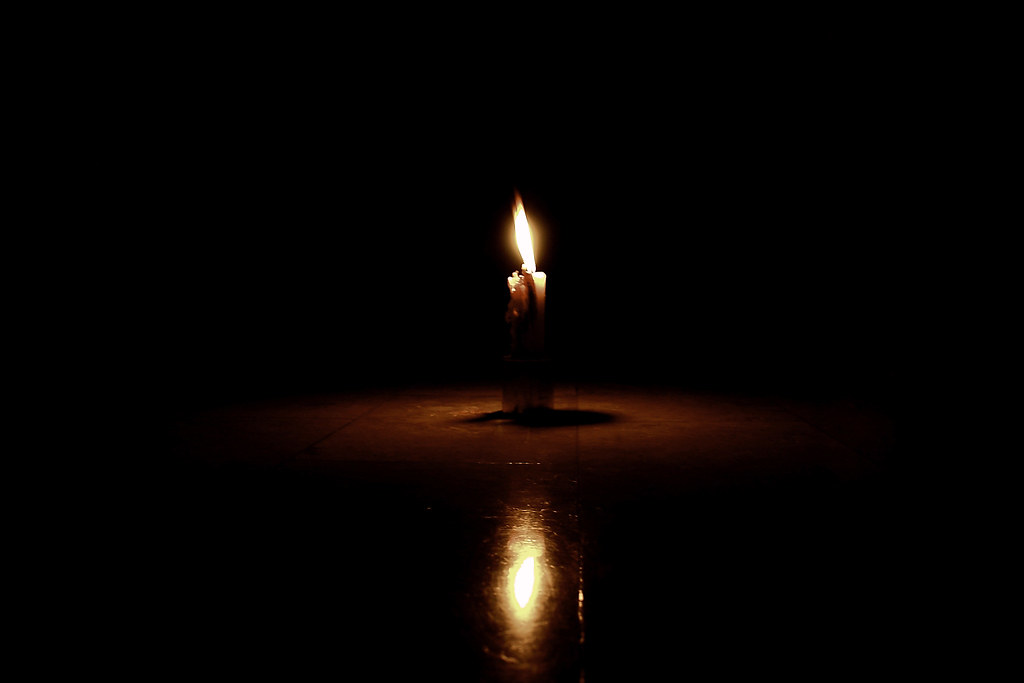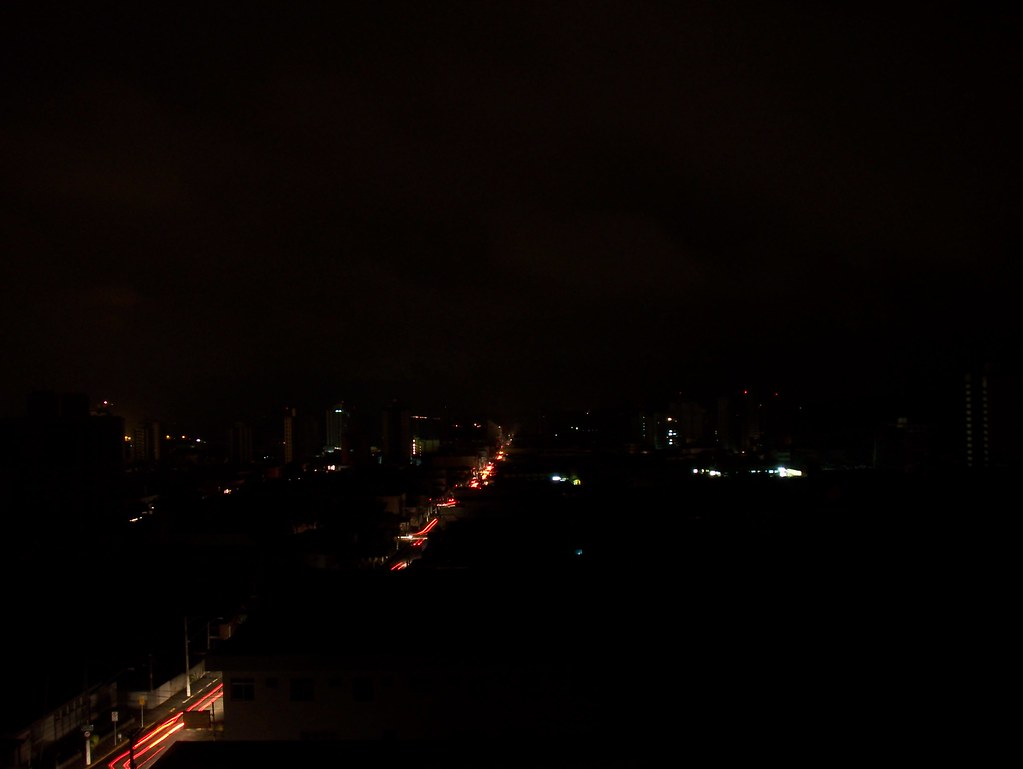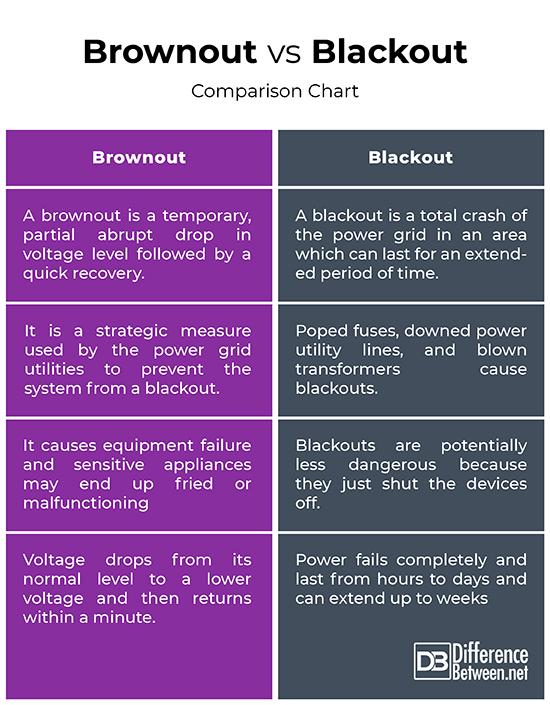Difference Between Brownout and Blackout
Energy systems and power grid systems aren’t always perfect. Power grid systems are tested sometimes maybe because of the harsh heat waves or natural disasters like cyclonic storms, heavy rain falls, and so on. These cause massive fluctuations in the voltage level, causing power surges or power spikes, ultimately resulting in brownouts or blackouts. Load shedding, brownouts, and blackouts become commonplace, even in developed nations. However, brownouts and blackouts can be anticipated under heavy-load conditions, such as a blistering heat wave. While brownout is a momentary reduction in voltage in an electric grid, blackout is a total loss of power. While the overall power grid system is almost stable, the harsh reality is that brownouts and blackouts do occur. So understanding the difference between brownouts and blackouts is essential for your power outage preparedness.

What is Brownout?
A brownout is a temporary, partial abrupt drop in voltage level followed by a quick recovery. It’s the opposite of a power surge in which case some electrical motors do not work and room lights are dimmer than normal. This indicates that the demand for power was momentarily greater than the supply, resulting in reduced voltage, or a condition what is called a brownout. It is caused by high electricity demand that is close to or above the production capacity of a power grid system. Simply put, a brownout, sometimes called a sag if it lasts for less than a second, refers to partial electrical supply failures of the energy grid system which in turn affects some areas while others remain unaffected. During a brownout, lights will flicker or become dimmer and unprotected systems will often turn themselves off or restart. It is a strategy used by the power grid utilities to prevent the system from a blackout condition.

What is Blackout?
As compared to a brownout, a blackout is a total disruption of electrical services in an area for a longer period of time. A blackout, also called a power failure or power cut, is a total crash of the power grid as a result of severe weather conditions or equipment failure at power plants. It is a large-scale service disruption which can last from hours to days and days to weeks in case of a serious emergency or a natural disaster like storm, earthquake, flood, cyclone, and so on. Blackouts usually happen due to an imbalance between power generation and power consumption meaning more electricity is consumed than power companies can supply. When the demand is higher than the supply, power utilities cut back on the power they release in order to prevent a blackout from happening, which allow them to save power for the times when it is needed the most. They do that in two ways – a pre-planned brownout and a rolling blackout.
Difference between Brownout and Blackout
Condition
– A brownout, sometimes called a sag or dip when last for less than a second, is an intentional or unintentional drop in the voltage levels in certain areas causing dimming of the light bulbs. It is a partial electrical supply failure of the power grid systems and utilities which affects a limited area while other areas may remain unaffected. A blackout, on the other hand, is a large-scale disruption of electrical services, a total crash of the power grid which can last for hours to days and extend up to weeks.
Causes
– Brownouts are caused by high electricity demand that is close to or above the production capacity of a power grid system. It is a strategic measure used by the power grid utilities to prevent the system from a blackout. It can be caused by a variety of reasons such as overloads in electrical systems, severe weather conditions, too many electrical appliances on a single circuit, inadequate wiring, etc. Blackouts are caused by equipment failure at power plants or severe weather conditions or natural disasters such as storms, earthquakes, cyclones, heavy rainfall, and so on.
Complications
– While brownouts and blackouts can be both intentional and unintentional which may last for anywhere from a few minutes to several hours, brownouts can actually cause more damage to sensitive electrical equipment that run on precise voltage capacity. When power levels fluctuate greatly at once, it can cause equipment failure and sensitive appliances may end up fried or malfunctioning. Unplug the devices once you start seeing the signs to protect your devices from the dangers of a brownout. Blackouts, on the other hand, often come without warning but are less likely to impact your devices because blackouts just shut them off
Brownout vs. Blackout: Comparison Chart

Summary
When consumers start consuming more electricity than power companies can supply, they cut down on the power they release to save power for the times when it is needed the most. They do that in two ways: a brownout and a rolling blackout. A brownout a temporary drop in voltage level followed by a quick recovery whereas a blackout is a large-scale disruption of electrical services which can last from hours to days and can extend up to weeks. A brownout is not a reduction in the amount of power, but in the strength of the power. Simply put, brownouts are mostly a preventive measure imposed in an effort to reduce load in order to prevent the systems from a blackout.
- Difference Between Caucus and Primary - June 18, 2024
- Difference Between PPO and POS - May 30, 2024
- Difference Between RFID and NFC - May 28, 2024
Search DifferenceBetween.net :
Leave a Response
References :
[0]Byers, Ann. Blackouts: A Practical Survival Guide. New York, United States: Rosen Publishing, 2006. Print
[1]Byers, Ann. Blackouts: A Practical Survival Guide. New York, United States: Rosen Publishing, 2006. Print
[2]Gupta, Manish and Raj Sharman. Handbook of Research on Social and Organizational Liabilities in Information Security. Hershey, Pennsylvania: IGI Global, 2008. Print
[3]Walker, Denise C.. Mass Notification and Crisis Communications: Planning, Preparedness, and Systems. Boca Raton, Florida: CRC Press, 2012. Print
[4]Image credit: https://live.staticflickr.com/2778/4094537165_9a88e36f94_b.jpg
[5]Image credit: https://live.staticflickr.com/2662/4026869645_88a937bfb0_b.jpg
